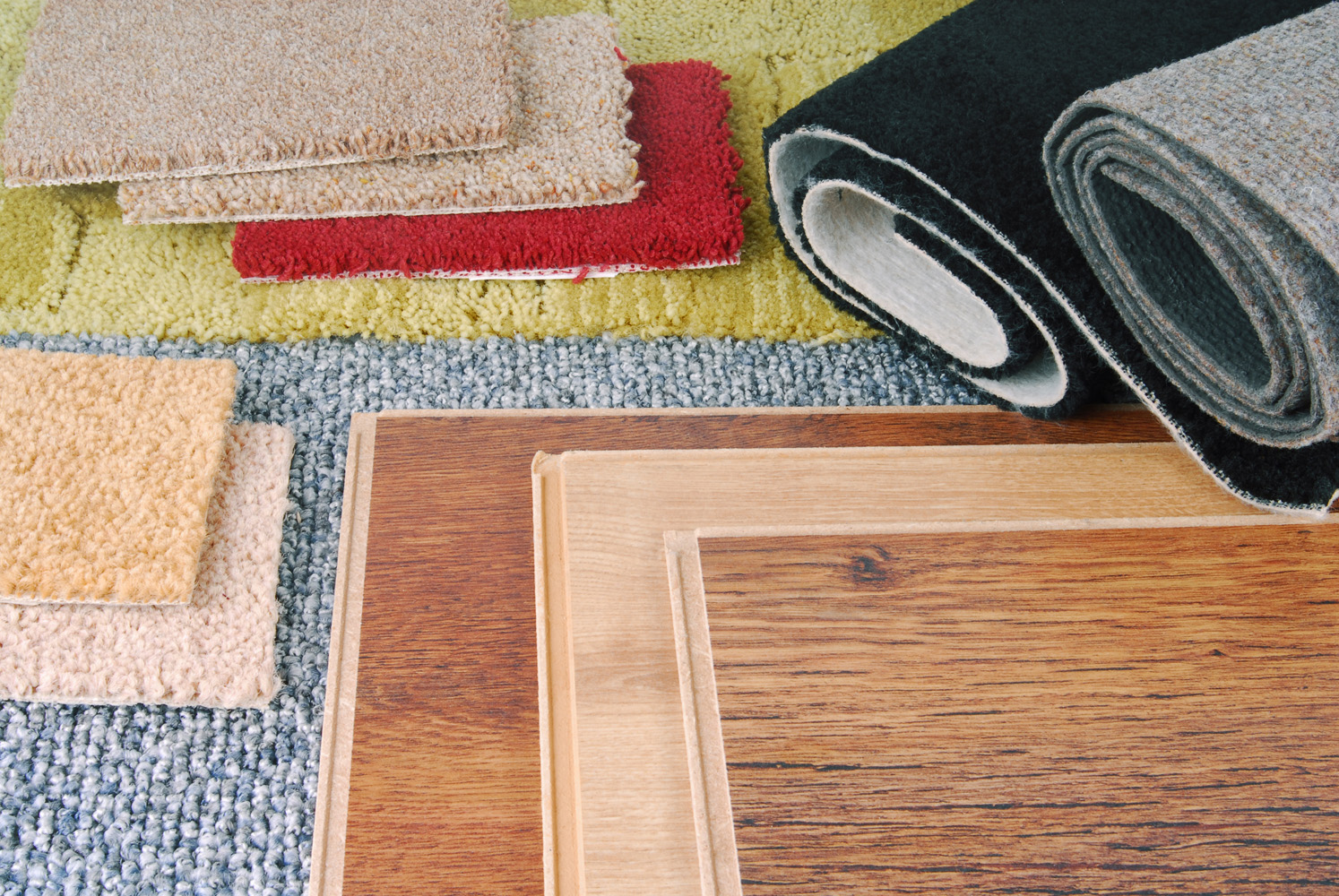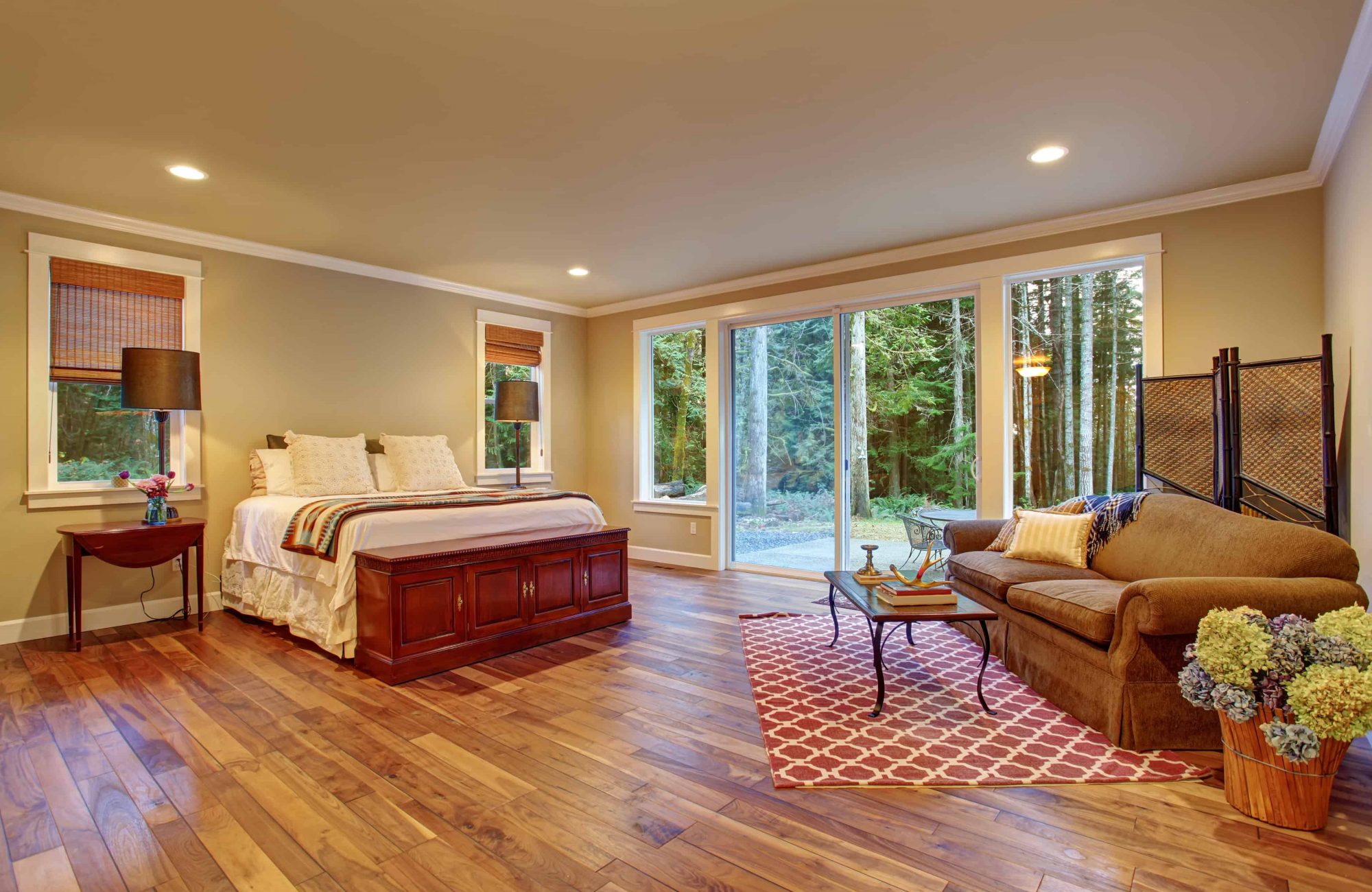Comfort and Aesthetics: Carpet Vs Wood Floors In Bedrooms

The choice between carpet and wood floors in a bedroom can be a tough one, as both offer distinct advantages in terms of comfort and aesthetics. While carpet provides a cozy and warm underfoot experience, wood floors offer a sleek and sophisticated look. Let’s delve into the pros and cons of each option.
Comfort, Carpet vs wood floors in bedrooms
Carpet offers a softer and more comfortable walking experience compared to wood floors. Its plush texture provides a cushion for your feet, making it ideal for bedrooms where you spend a significant amount of time barefoot. Additionally, carpet excels in sound absorption, reducing noise levels and creating a quieter environment for sleeping. On the other hand, wood floors can feel cold and hard underfoot, especially during colder months. They also tend to be noisier, amplifying footsteps and other sounds.
Aesthetics
Carpet and wood floors each bring a distinct aesthetic appeal to bedrooms. Carpet offers a wide range of colors, patterns, and textures, allowing for greater customization to complement different décor styles. From plush shag carpets to minimalist berbers, there’s a carpet style to suit every taste. Wood floors, on the other hand, offer a more timeless and elegant look. They can create a sophisticated and airy atmosphere, particularly when paired with minimalist furniture and décor.
The choice between carpet and wood floors ultimately depends on your personal preferences and the overall design of your bedroom.
Maintenance and Durability
:max_bytes(150000):strip_icc()/natural-hardwood-bedroom-flooring-1314797-41d9c33bef5e4518a2c65d5349887a17.jpg)
Choosing between carpet and wood floors in your bedroom is a big decision, and it’s not just about looks. You also need to consider how much effort you’re willing to put into upkeep and how long you want your floors to last.
Maintenance Requirements
The maintenance requirements of carpet and wood floors differ significantly. Carpet, with its soft and cozy texture, often requires more frequent cleaning to maintain its appearance and hygiene. Wood floors, on the other hand, while requiring a different type of care, can offer a more low-maintenance solution in the long run.
- Carpet: Carpet is a magnet for dust, dirt, and allergens, making regular vacuuming a necessity. Spills and stains can be a nightmare, requiring immediate attention and potentially professional cleaning. Depending on the type of carpet, deep cleaning might be necessary every 6-12 months.
- Wood Floors: Wood floors are generally easier to clean than carpet, as spills and dirt are visible and can be wiped up quickly. Regular sweeping or vacuuming with a soft-bristled brush is usually sufficient. However, wood floors require periodic mopping with a wood-specific cleaner to maintain their shine and protect the finish.
Durability
Durability is a key factor when choosing flooring, especially for high-traffic areas like bedrooms. Carpet and wood floors offer different levels of durability, with their own strengths and weaknesses.
- Carpet: Carpet can be surprisingly durable, especially with high-quality materials and proper maintenance. However, it’s prone to wear and tear in high-traffic areas, leading to matting and flattening. Carpet can also be susceptible to stains and fading, depending on the material and the type of traffic it receives.
- Wood Floors: Wood floors are known for their longevity and resilience. They can withstand heavy foot traffic and are less prone to wear and tear compared to carpet. However, wood floors are susceptible to scratches and dents, especially from sharp objects or heavy furniture.
Tips for Maintaining Longevity
- Carpet: Regular vacuuming and spot cleaning are crucial for extending the lifespan of your carpet. Professional cleaning every 12-24 months can help remove deep-seated dirt and allergens, restoring its freshness. Rotating furniture regularly can prevent matting and flattening in high-traffic areas.
- Wood Floors: Regular sweeping or vacuuming with a soft-bristled brush can prevent dirt buildup and scratches. Mopping with a wood-specific cleaner every few weeks can maintain the shine and protect the finish. Using felt pads under furniture legs can prevent scratches and dents.
Health and Allergies

When choosing flooring for your bedroom, it’s important to consider its impact on your health and allergies. Carpet and wood floors can both have advantages and disadvantages in this regard.
Dust Mites and Allergens
Dust mites are microscopic creatures that feed on dead skin cells and are a common allergen. They thrive in warm, humid environments, making bedrooms a prime habitat. Carpet fibers can trap dust mites and their allergens, while wood floors generally provide a smoother surface that is easier to clean.
- Carpet: Carpet fibers can act as a haven for dust mites, providing them with a place to hide and reproduce. This can be a major concern for people with dust mite allergies. However, choosing a carpet with tightly woven fibers and a low pile can help reduce dust mite accumulation.
- Wood Floors: Wood floors are generally considered more dust mite-resistant than carpet. The smooth surface makes it easier to vacuum and remove dust mites and their allergens. However, cracks and crevices in wood floors can still harbor dust mites, so regular cleaning is crucial.
Mold Growth
Mold growth can also be a concern in bedrooms, especially in areas with high humidity. Carpet can be more susceptible to mold growth than wood floors. This is because carpet fibers can trap moisture, creating a favorable environment for mold to thrive.
- Carpet: Carpet can trap moisture, which can lead to mold growth. This is particularly true in areas with high humidity or poor ventilation. Choosing a carpet with moisture-resistant backing can help reduce the risk of mold growth.
- Wood Floors: Wood floors are generally more resistant to mold growth than carpet. The smooth surface allows moisture to evaporate quickly, making it less hospitable to mold. However, wood floors can still be susceptible to mold growth if they are exposed to excessive moisture or humidity.
Indoor Air Quality
The materials used for both carpet and wood floors can impact indoor air quality. Some carpet materials can release volatile organic compounds (VOCs), which can irritate the respiratory system and trigger allergies. Similarly, some wood floor finishes can also emit VOCs.
- Carpet: Some carpet materials, especially those made with synthetic fibers, can release VOCs into the air. Choosing natural fibers like wool or cotton can help minimize VOC emissions.
- Wood Floors: Some wood floor finishes, such as polyurethane, can also emit VOCs. Choosing a low-VOC or VOC-free finish can help improve indoor air quality.
Carpet vs wood floors in bedrooms – Right, so, you’re thinking about carpet vs wood floors for your bedroom, yeah? It’s a bit of a classic dilemma, really. But, if you’re planning on having a small entertainment centre in your room, small entertainment center for bedroom , then you might want to consider wood floors.
They’ll give you a more sleek and modern vibe, which works better with that kind of set-up. But, if you’re going for a more cosy, chilled out feel, then carpet is probably your best bet.
Carpet can be a bit of a nightmare in a bedroom, especially if you’re prone to spills or have a penchant for shedding fur. Wood floors are a much better bet, especially if you’re thinking of turning a small bedroom into a closet – you can just chuck a rug down for a bit of warmth and cosiness.
But then again, if you’re going for that minimalist, Scandi vibe, maybe stick with the wood and embrace the bare-bones look.
